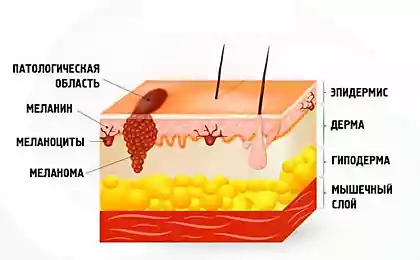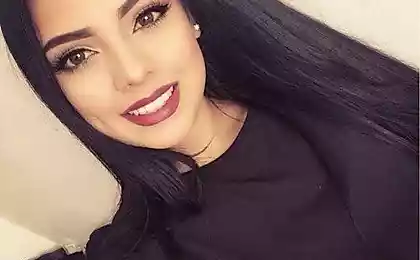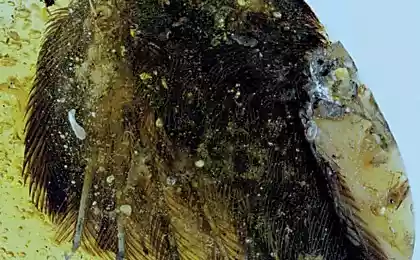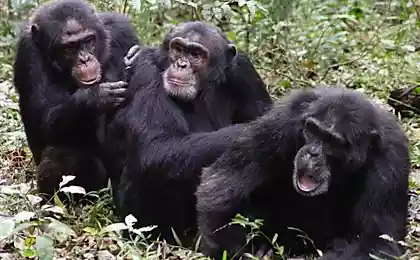652
Hair, feathers and scales have a common ancestor
A team of scientists from Switzerland was able to show that hair, scales and feathers are homologous and are descended from a common ancestor - a reptile. Theoretical background and experimental results have been discussed in detail in the journal Science Advances and short - in a press release submitted on behalf of the University of Geneva. Today we tell about what was the evidence of such a bold statement and a conclusion for further research allows you to make the work done.

Most mammals, birds, reptiles, easily recognized by his hair, feathers and scales, respectively. However, the lack of transitional fossils between the scales and hairs, and significant differences in their morphogenesis and protein composition have caused controversy regarding their potential common ancestry, ongoing for decades.
Scientists have long known that mammalian hair and feathers of birds evolving from the primitive structure placodes - a kind of thickening of the epidermis with columnar cells, reducing their rate of proliferation and producing specific genes. This observation, again, held a line between the supporters of a common ancestor of birds and mammals and opponents of this assumption, claiming that those and others - it's completely different kinds with different pedigree. At the same time supporters of the latest version somehow we close our eyes to the fact that she was forced to accept the fact that two very different, they claimed species "invented" placode independently.
In 2015, scientists from Yale University (USA) have published an article which demonstrated that the scales, hair and feathers at an early stage of development, have a common molecular signature. Published results again added fuel to the fire of the existing long-standing dispute between the two schools of evolutionists. Proponents of one of them continued to defend the viability of the hypothesis that identical molecular signatures show an overall evolutionary origin of skin appendages, and supporters of the other, that the development of various appendages of the skin in the course of evolution at some stage the same genes have been reused.
dot the "i»
The last work of biologists Nicolas Di-Poi (Nicolas Di-Poï) and Milinkovic Michel (Michel C. Milinkovitch) of the Department of Genetics and Evolution, University of Geneva (UNIGE) and the Swiss Institute of Bioinformatics (SIB) will put an end to many years of discussion. Scientists have shown that the scales of reptiles evolved from placode with anatomical and molecular signatures of similar signatures placode birds and mammals in the early stages of development.
During the research morphological and molecular characteristics of the skin were analyzed in the process of embryonic development, crocodiles, snakes and lizards. "Our study not only provides new molecular data that complement the work of the American team, but also identifies key microanatomical facts", - explains Michel Milinkovic. - "Indeed, we have identified a reptile new molecular signatures that are identical to those observed in the development of hair and feathers, as well as the presence of placode anatomical shape similar to the shape of the placode of mammals and birds. This indicates that the three types of skin appendages are homologous: Scale - reptiles, feathers - birds, and hair - in mammals, despite their very different final form, evolved from their common ancestor, the reptiles »
<. br>
key gene for skin appendages
In the next phase of the study authors have studied the work of bearded dragons, presented three forms. The first form - a normal wild form, the second form is characterized by smaller dimensions, and the third, in turn, is mutated in two directions with a plurality of different defects, including complete absence of scale. Comparing the genomes examined three subspecies of bearded dragons, the scientists were able to identify the defective gene that resulted in a well-known variety of forms. It ektodisplazin-A (EDA), a mutation which ultimately resulted in the release of one of the forms of bearded dragons scales.
"We have determined that a peculiar appearance of these naked lizard is due to disruption of Ectodysplasin-A, a gene mutation that in humans and mice are known to generate significant deviations in tooth development, glands, hair and nails," - explained Michelle Milinkovic. On the basis of studies and comparative analysis Swiss scientists have shown that lizards with the mutated gene EDA placode structure is broken, just like in mammals or birds infected with similar mutations in the same gene can not develop from placode own hair or feathers. These data together coherently indicate a common origin of scales, feathers and hair.
Having such a strong evidence of unity of origin, the scientists plan to continue research to identify and describe the mechanisms that underlie the development of specific forms of skin appendages. This, in turn, will give an answer to another important question: how ancient scaly skin gave rise to the existing morphological diversity of scales, feathers and hair. "These studies will, we hope, will complement our understanding of the physical and molecular mechanisms that give rise to complexity and diversity of life in the course of evolution" - summed Malinkovich.
Interestingly, earlier, by studying the ability of a chameleon changing its color, Michel Malinkovich able to explain the nature of this strange phenomenon of the active restructuring of the spatial structure of the skin nanocrystals.
The full text of scientific publications can be found here
Science Advances 24 Jun 2016:
Vol. 2, no. 6, e1600708
DOI: 10.1126 / sciadv.1600708
That's all, you had Dronk.Ru. Do not forget to return the money for purchases in China and to subscribe to our blog, will be much more interesting

Recommended:. B>
- Save up to 8% with each purchase on AliExpress and other online stores
China - Why do online shops give the money for the purchase
? - Return the money - Choosing a cashback service to Aliexpress
- History of Dronk.ru - the choice quadrocopters to return the money for buying on AliExpress, and not only
- The best cashback service or 5 main evaluation criteria cashback service
Source: geektimes.ru/company/dronk/blog/277918/

Most mammals, birds, reptiles, easily recognized by his hair, feathers and scales, respectively. However, the lack of transitional fossils between the scales and hairs, and significant differences in their morphogenesis and protein composition have caused controversy regarding their potential common ancestry, ongoing for decades.
Scientists have long known that mammalian hair and feathers of birds evolving from the primitive structure placodes - a kind of thickening of the epidermis with columnar cells, reducing their rate of proliferation and producing specific genes. This observation, again, held a line between the supporters of a common ancestor of birds and mammals and opponents of this assumption, claiming that those and others - it's completely different kinds with different pedigree. At the same time supporters of the latest version somehow we close our eyes to the fact that she was forced to accept the fact that two very different, they claimed species "invented" placode independently.
In 2015, scientists from Yale University (USA) have published an article which demonstrated that the scales, hair and feathers at an early stage of development, have a common molecular signature. Published results again added fuel to the fire of the existing long-standing dispute between the two schools of evolutionists. Proponents of one of them continued to defend the viability of the hypothesis that identical molecular signatures show an overall evolutionary origin of skin appendages, and supporters of the other, that the development of various appendages of the skin in the course of evolution at some stage the same genes have been reused.
dot the "i»
The last work of biologists Nicolas Di-Poi (Nicolas Di-Poï) and Milinkovic Michel (Michel C. Milinkovitch) of the Department of Genetics and Evolution, University of Geneva (UNIGE) and the Swiss Institute of Bioinformatics (SIB) will put an end to many years of discussion. Scientists have shown that the scales of reptiles evolved from placode with anatomical and molecular signatures of similar signatures placode birds and mammals in the early stages of development.
During the research morphological and molecular characteristics of the skin were analyzed in the process of embryonic development, crocodiles, snakes and lizards. "Our study not only provides new molecular data that complement the work of the American team, but also identifies key microanatomical facts", - explains Michel Milinkovic. - "Indeed, we have identified a reptile new molecular signatures that are identical to those observed in the development of hair and feathers, as well as the presence of placode anatomical shape similar to the shape of the placode of mammals and birds. This indicates that the three types of skin appendages are homologous: Scale - reptiles, feathers - birds, and hair - in mammals, despite their very different final form, evolved from their common ancestor, the reptiles »
<. br>

key gene for skin appendages
In the next phase of the study authors have studied the work of bearded dragons, presented three forms. The first form - a normal wild form, the second form is characterized by smaller dimensions, and the third, in turn, is mutated in two directions with a plurality of different defects, including complete absence of scale. Comparing the genomes examined three subspecies of bearded dragons, the scientists were able to identify the defective gene that resulted in a well-known variety of forms. It ektodisplazin-A (EDA), a mutation which ultimately resulted in the release of one of the forms of bearded dragons scales.
"We have determined that a peculiar appearance of these naked lizard is due to disruption of Ectodysplasin-A, a gene mutation that in humans and mice are known to generate significant deviations in tooth development, glands, hair and nails," - explained Michelle Milinkovic. On the basis of studies and comparative analysis Swiss scientists have shown that lizards with the mutated gene EDA placode structure is broken, just like in mammals or birds infected with similar mutations in the same gene can not develop from placode own hair or feathers. These data together coherently indicate a common origin of scales, feathers and hair.
Having such a strong evidence of unity of origin, the scientists plan to continue research to identify and describe the mechanisms that underlie the development of specific forms of skin appendages. This, in turn, will give an answer to another important question: how ancient scaly skin gave rise to the existing morphological diversity of scales, feathers and hair. "These studies will, we hope, will complement our understanding of the physical and molecular mechanisms that give rise to complexity and diversity of life in the course of evolution" - summed Malinkovich.
Interestingly, earlier, by studying the ability of a chameleon changing its color, Michel Malinkovich able to explain the nature of this strange phenomenon of the active restructuring of the spatial structure of the skin nanocrystals.
The full text of scientific publications can be found here
Science Advances 24 Jun 2016:
Vol. 2, no. 6, e1600708
DOI: 10.1126 / sciadv.1600708
That's all, you had Dronk.Ru. Do not forget to return the money for purchases in China and to subscribe to our blog, will be much more interesting

Recommended:. B>
- Save up to 8% with each purchase on AliExpress and other online stores
China - Why do online shops give the money for the purchase
? - Return the money - Choosing a cashback service to Aliexpress
- History of Dronk.ru - the choice quadrocopters to return the money for buying on AliExpress, and not only
- The best cashback service or 5 main evaluation criteria cashback service
Source: geektimes.ru/company/dronk/blog/277918/
Summer lazy cake without baking: Mix everything and pour into the mold!
The track in the US will get a "smart" road surface























